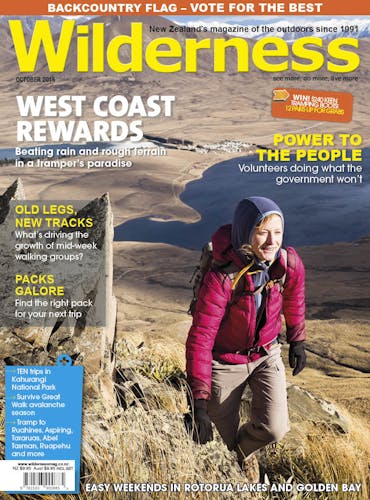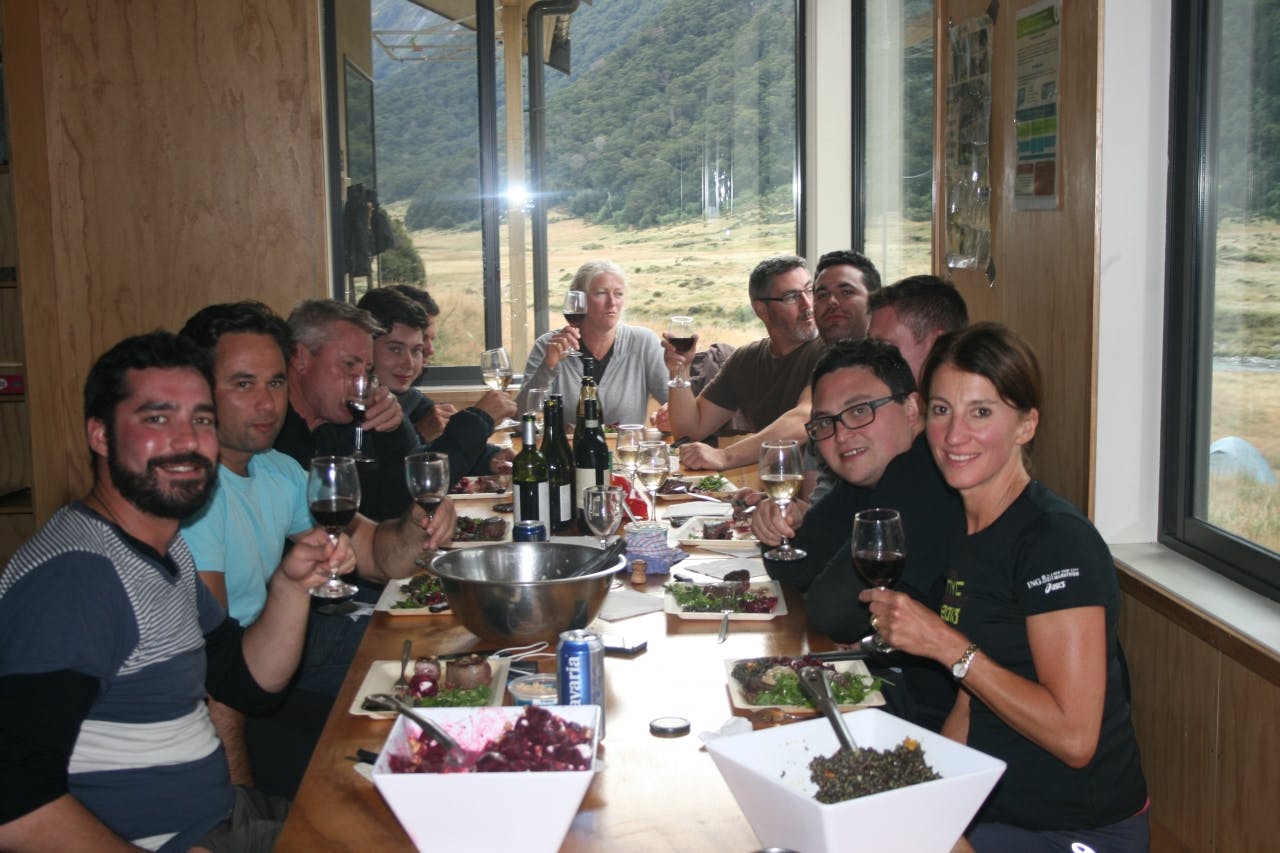Headlamps increase visibility from the air
A great means of being seen by helicopters (Wild skills, July 2015), especially in low light conditions, is looking at the helicopter with a head torch on.
I had cause to look for a couple of misplaced trampers who failed to turn up at an agreed rendezvous and spotted the pair at 10am in a search along a bush-clad creek in drizzly conditions simply because one of the two had his headlamp on and had looked up at the noise of the helicopter passing nearby. The light was very obvious, whereas the trampers were almost invisible.
I would advise anyone being looked for by helicopters to use their headlamps as soon as the helicopter can be heard. The lower the light level, the better this works – even in thick bush.
– Geoff Robson, via email
Exploits on Heaphy overstated
Lest any reader of the article ‘Going the Extra Mile’ (August 2015) thinks I have walked the Heaphy Track 1000 times, let me clarify this point.
During the past 11 years, my business has relocated about 1000 vehicles from one end of the Heaphy Track to the other. But I have walked back from Kohaihai to Golden Bay only about 400 times altogether. At other times I have had a vehicle to drive back, or a relieving driver has helped out.
Another thing I’d like to point out is that only once in a blue moon has my wife Helen needed to come and fetch me from the Golden Bay end of the track when I have walked through. This is because I pre-position my vehicle at the Brown Hut car park so that I am walking towards it.
– Derry Kingston, Heaphy Track Help, Golden Bay
Raincoat reminiscing
I have recently returned to New Zealand after 43 years overseas and am devouring back copies of Wilderness to bring me up to date with the state of play in the tramping world.
My first tramp was in December 1945 when I was taken by my older brother to Old Dobsons Hut in the southern Tararuas. In spite of it (still) being the wettest weekend I have ever tramped, my affinity with the New Zealand bush has never diminished.
My pack was a canvas ‘kidney rotter’, my brother made my sleeping bag and filled it with kapok (a cotton like fluff from the seeds of the kapok tree) and my parka, also made by him, was somewhat ahead of its time and I consider quite unique. Oil proofed japara was the material of choice then and the three piece hood pattern a tribute to his ingenuity. Attached to the base of the hood and also covering the shoulders was an extra ‘layer’ of japara which also formed a cape to cover the (non-waterproof) pack. The cape was more than waist length and the bottom corners had strings which were tied around the waist. Thus this integral cape covered both shoulders and pack.
I am somewhat surprised that no manufacturer of wet weather gear has ever repeated this design, which blocks rain from between the wearer’s back and their pack. I guess ‘waterproof’ packs have eliminated the need but I can’t help but think the idea had merit.
I look forward to reading further editions of Wilderness to satisfy my appetite particularly for practical tramping gear surveyed and tested by your staff.
Graeme Taylor, Hutt Valley Tramping Club
At Siberia, hell beats heaven hands down
Mea culpa. We love the outdoors, steak, pinot and introducing newbies to the hills. But in the best tradition of Steinbeck, somehow our plans appear to have gone astray and with some mortification we have watched June, August and September Letters to the Editor pick over the entrails of that Siberia ‘party’ weekend.
Let’s rewind. Our Central Otago company, Nevis Bluff Wines, has some loyal Wellington and Auckland restaurateurs who we like to thank by taking on a local experience. After exploring the Nevis Valley, Paradise and the like, a real adventure was planned for Siberia Hut. We chose a Sunday arrival to minimise the chance of school age children being present, and took tents in case the hut was full. And yes, we did bring a five star chef, kitchen hand and loads of reserve pinot noir and pinot gris in via helicopter.
David Round’s letter in August correctly questioned the attitude of those hut occupants already in residence when we arrived. David Cregan, who wrote in the June issue, had described our $30 bluetooth mini speaker (it ran out of batteries at 11pm) and a harmonica as a ‘sound system and musical instruments’. The ‘welcome’ given to us by the hut occupants explains why we spent until midnight on the outside deck. This was a blessing in disguise – it meant we didn’t have to share our 30 dozen fresh bluff oysters with those inside.
The next day simply sparkled while we climbed the steep and rooted track to Crucible Lake. Many of those in our party had never walked in a beech forest before, let alone visited an alpine lake where rock wrens danced on the shore.
Back at the hut, we breathed a sigh of relief when we found it empty. The warden advised us that some of those departing guests were not happy, but got interrupted when Stewart Brown, who wrote in our defence in the September issue, and his Aussie mates arrived. They had encountered the previous hut occupants on the track and learned of their night from hell so were feeling anxious. We soon cured that by handing them a beer followed by pinot gris, beef and venison eye fillet, quinoa vegetable and haloumi, rocket parmesan and pear with a reserve pinot, apple crumble and cheeseboard. The next day they commented if hell was like this, then sorry heaven….
We are genuinely sorry for offending people on our first night – those present were always welcome to join us. Thirteen North Islanders had a trip the likes of which they will probably never have again. At least until next year. If any reader is thinking of biking the Central Otago Rail Trail in the second week of April and doesn’t like pinot, fun and very average singing, then it might be a good idea to rethink your dates.
– Graham Wilkinson, director, Nevis Bluff Wines







